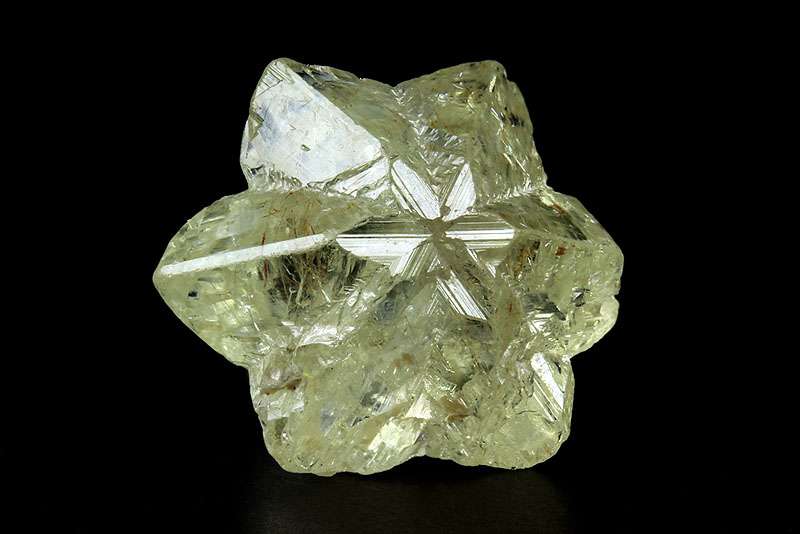
Appearance
Chrysoberyl comes in a variety of hues, such as colorless, brown, green, and yellow. The most well-known color variant is called “chrysoberyl,” and it ranges from yellow to greenish-yellow. The presence or absence of trace elements in the crystal structure might affect the color. The orthorhombic crystal system is where chrysoberyl crystallizes. It usually produces elongated prismatic crystals. Its distinct optical qualities are a result of the crystal structure.
Geographical Distribution
Chrysoberyl is found in many different parts of the world. Brazil, Sri Lanka, Russia, Madagascar, India, Zimbabwe, Tanzania, Myanmar (Burma), and the United States are among the countries with noteworthy deposits.
History
Chrysoberyl has been prized for ages and used as a gemstone for a very long time. The most well-known type, alexandrite, was named for Russian king Alexander II after it was initially found in the Ural Mountains of Russia in the 1830s. Because of its amazing capacity to change color, alexandrite is especially prized by jewelry collectors and enthusiasts.
Metaphysical Properties
The solar plexus and crown chakras are aligned by chrysoberyl. It enhances one’s spiritual and personal power and opens the head chakra. Riches are linked to chrysoberyl, which also fosters creativity well. It also encourages harmony and tolerance.

Chemical Composition
BeAl2O4 is the chemical composition of chrysoberyl, a rare mineral composed of aluminum oxide and beryllium. Occasionally, it is mistaken for the silicate mineral called beryl, which is composed of Be3Al2Si6O18.
Types
The following are some of the most well-known chrysoberyl species and varieties:
Alexandrite:
Alexandrite’s distinctive ability to change color makes it one of the most precious and well-known chrysoberyl types. During the daytime, it appears green, but under incandescent light, it takes on a reddish or purplish color. The presence of chromium in its crystal structure is the cause of this striking color change. Alexandrite’s captivating optical properties and scarcity make it a highly sought-after gem by gem collectors.
Cat’s-Eye Chrysoberyl:
The “cat’s-eye effect,” also known as chatoyancy, is an intriguing phenomenon displayed by this type of chrysoberyl. When a gemstone is carved into a cabochon, it shows off a dazzling, thin strip of light that moves across the gemstone’s surface. The reason for this appearance is that the crystal structure contains needle-like fiber or tube inclusions that reflect light in a concentrated line. Chrysoberyl comes in a variety of colors, including yellow, green, and brown, which give rise to the cat’s-eye look.
Cymophane:
Because of its unique chatoyant effect, cat’s-eye chrysoberyl is also known by the term cymophane. The Greek terms “kyma,” which means wave, and “phanos,” which means appearance, are the source of the phrase “cymophane,” which describes the wavy look of the cat’s eye effect.
Yellow Chrysoberyl:
The beautiful yellow hue of this chrysoberyl type is highly prized. It is frequently cut into faceted gemstones for use in jewelry because it lacks the intense green tints present in certain gemstones.
Green Chrysoberyl:
Compared to the yellow types, this cultivar tends to have more green tones. Its hues range from a light green to a brighter, more vivid green. Because of its durability, green chrysoberyl is a popular stone for usage in a variety of jewelry settings.
Brown Chrysoberyl:
Compared to other color variants, brown chrysoberyl is less frequent and typically has a lower value when used as a gemstone. Its less appealing color makes it less popular even if it can still exhibit the pleochroic effect.
Uses
Chrysoberyl is mostly used in jewelry for commercial purposes.
The jewelry industry uses chrysoberyl in the following ways:
- Gemstone Jewelry: Numerous jewelry items, including rings, earrings, necklaces, bracelets, and pendants, include chrysoberyl. Its eye-catching optical phenomena and vivid colors make it a popular option for both formal and informal jewelry creations.
- Alexandrite Rings: Because of its ability to change color, alexandrite is frequently used in statement and engagement rings. The capacity of jewelry pieces to exhibit multiple colors under different lighting circumstances adds a dynamic and interesting element.
- Cat’s-Eye Jewelry: To highlight the cat’s-eye look, chrysoberyl is usually cut into round, smooth cabochons. Because these cabochons are frequently used in rings, pendants, and earrings, the fascinating phenomenon may be seen and appreciated up close.
- Collector’s Items: Collectors value fine cat’s eye chrysoberyl and alexandrite gemstones for their uncommon optical phenomena and scarcity. Because these characteristics increase the value of the diamond, collectors frequently look for stones with well-defined, strong color changes or chatoyancy.
- Birthstone and Anniversary Jewelry: Chrysoberyl’s yellow and green color varieties make it an alternative birthstone for the month of June. It can be used in jewelry pieces to celebrate June birthdays. Additionally, certain anniversaries are associated with chrysoberyl as a symbolic gift choice.
- Investment Jewelry: Because they are rare and of superior quality, chrysoberyl gemstones, particularly alexandrite, can increase in value over time. Some people decide to make alternative investments by purchasing these kinds of gemstones.
Table





